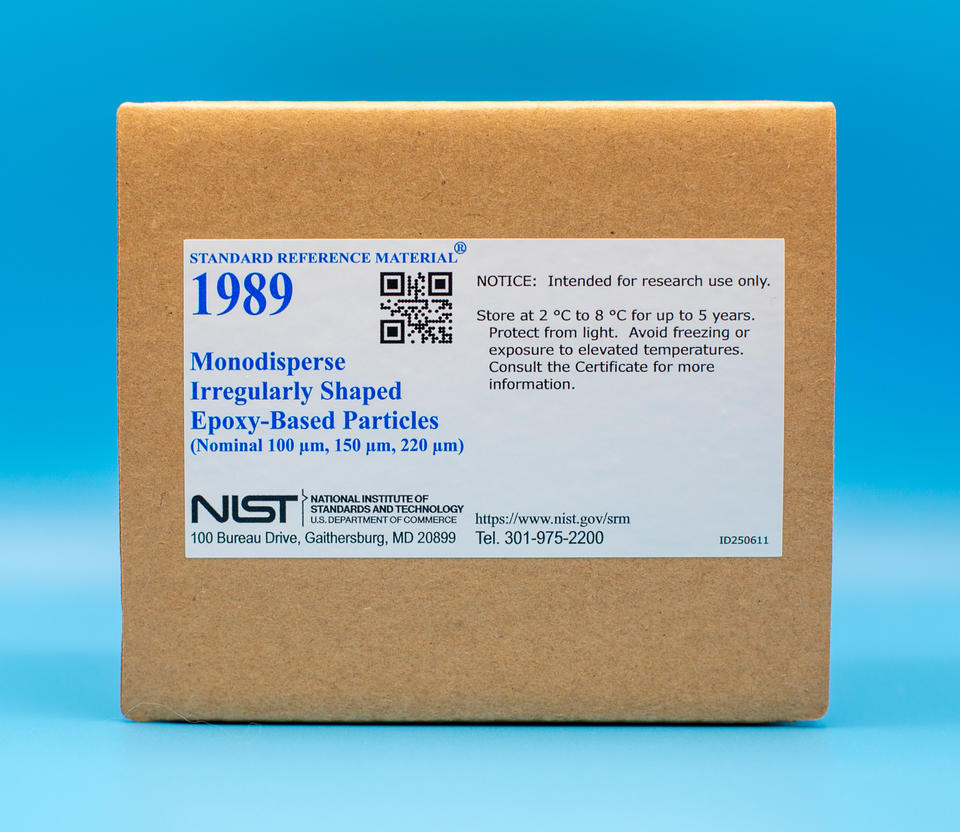A Particle Size SRM for Training and Qualifying Visual Inspection Analysts
SRM 1989 Monodisperse Irregularly Shaped Epoxy-based Particles (Nominal 100 µm, 150 µm, 220 µm)

NIST received requests from scientists in the biopharmaceutical industry, instrument vendors, and from the U.S. Food and Drug Administration to develop a particle size SRM for visual inspection. In the absence of suitable standards, the industry has relied on spherical polystyrene beads that do not look or behave like proteinaceous particles or proprietary standards that are inaccessible to other companies. This makes detecting, monitoring, and trending the stability of proteinaceous visible particles in biotherapeutics challenging. A physical standard can help better establish what is considered a “visible particle” for a particular product.
Visual inspection of biotherapeutics is an important step for drug manufacturers to obtain regulatory approval and lot release of drug products. Every parenteral unit is visually inspected to ensure that the batch is “essentially free” of particles as well as other defects. This inspection is done to ensure that the product does not contain any unintended particles (or other defects) since their presence can impact the safety and quality of a product.
A new Standard Reference Material (SRM) has been developed for use as a particle size standard to validate the precision of sizing methods of irregular shaped particles over an approximate size range of 100 µm to 220 µm. SRM 1989 has been developed to mimic the optical properties of visible aggregated proteinaceous particles.
This SRM was developed to allow more uniform monitoring of visible protein-like particles that may be found in biotherapeutics. The material is intended to be used as a particle size standard for qualifying and training visual inspection analysts on the visual inspection processes.
A unit of SRM 1989 comprises 3 vials, with each vial containing approximately 20 mL of an aqueous suspension of SU‑8 photoresist particles in a solution of 0.02 % sodium azide and 0.01 % surfactant [4‑(1,1,3,3‑Tetramethylbutyl)phenyl‑polyethylene glycol] by mass concentration. The SU-8 photoresist particles were prepared by fabrication of particles onto a sacrificial silicon wafer using a photolithographic process, followed by release from the wafer, purification, and dilution.
Learn more:
-New NIST Reference Material to Strengthen Quality Control for Biological Drugs
-Telikepalli SN, Ripple DC, Carrier M, Steffens KL, Newton D, Montgomery C, Ritchie NWM, Asmar AJ, Halter M (2025) Certification of Standard Reference Materials® 1989: Monodisperse Irregularly Shaped Epoxy-Based Particles (Nominal 100 µm, 150 µm, 220 µm). (National Institute of Standards and Technology, Gaithersburg, MD), NIST Special Publication (SP) 260-255. https://doi.org/10.6028/NIST.SP.260-255

